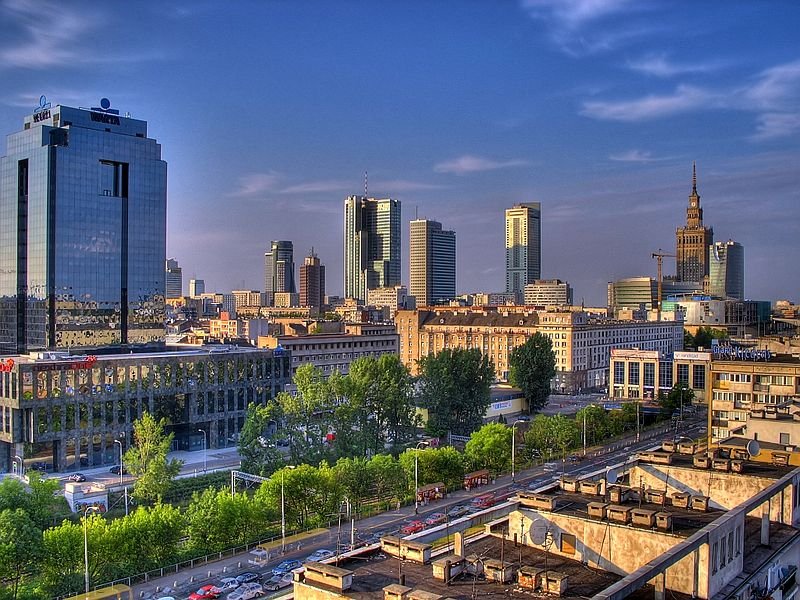 Downtown Warsaw
Downtown WarsawSource: https://commons.wikimedia.org/wiki/File:Warsaw_Downtown.jpg
Author: DocenttX

Warsaw (Warszawa) is the capital and biggest city in Poland. The city of 1.7 million people (2011 estimate), within a metropolitan area of 2.6 million, covers 516.9 sq km (199.6 sq mi) within the 6,100.43 sq km Warsaw Metropolitan Area. The Vistula River flows through Warsaw from southeast to northwest to empty into the Baltic Sea some 260 km (160 mi) away.
Warsaw is today a modern city and the economic heart of Poland. Much of the city was destroyed during the Second World War, so the rebuilding thereafter has given Warsaw a whole new character. It is a candidate for the European Capital of Culture 2016, as the city showcases how it has managed to regenerate from past devastation.
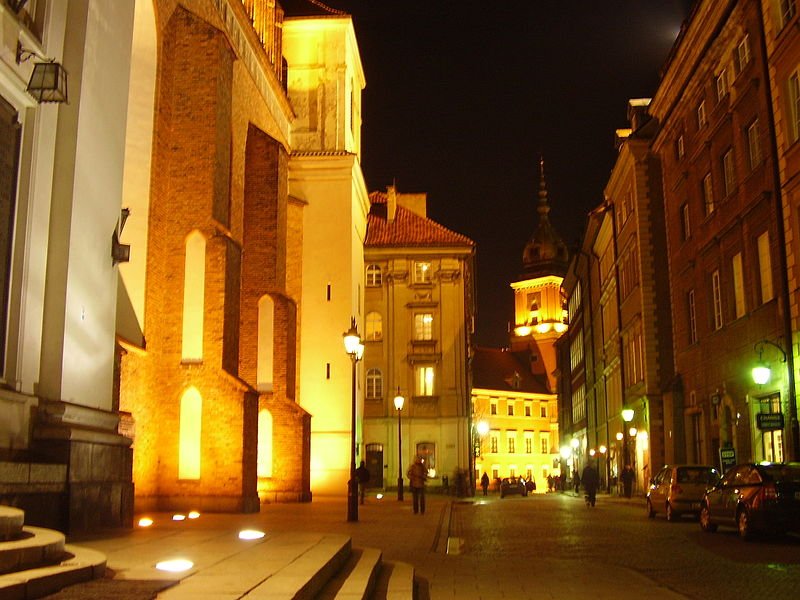 Warsaw at night
Warsaw at nightSource: https://commons.wikimedia.org/wiki/File:Warsaw_Easter_2008_055.jpg
Author: Wizzard

Warsaw observes the Central European Time, which is an hour ahead of Coordinated Universal Time (UTC+1) and two hours during Daylight Saving Time in summer. The phone area code for Warsaw is +48 22.
Warsaw experiences a humid continental climate. Its warmest months are July and August, when the average high temperature regularly reaches 23°C (74.8°F). Coldest month is January, when the average low temperature dips to -6.1°C (21°F). Summertime is the wettest time in Warsaw, with highest precipitation in July, at 73 mm (2.87 in).
The history of Warsaw can be traced to early fortifications built in the area, among them Bródno around the 10th century and Jazdów in the 13th. Modern Warsaw began as a small fishing village at the beginning of the 14th century. In 1573 it became the capital of the Polish-Lithuanian Commonwealth. The Polish capital was in Kraków until 1596, when King Sigismund III Vasa relocated to Warsaw.
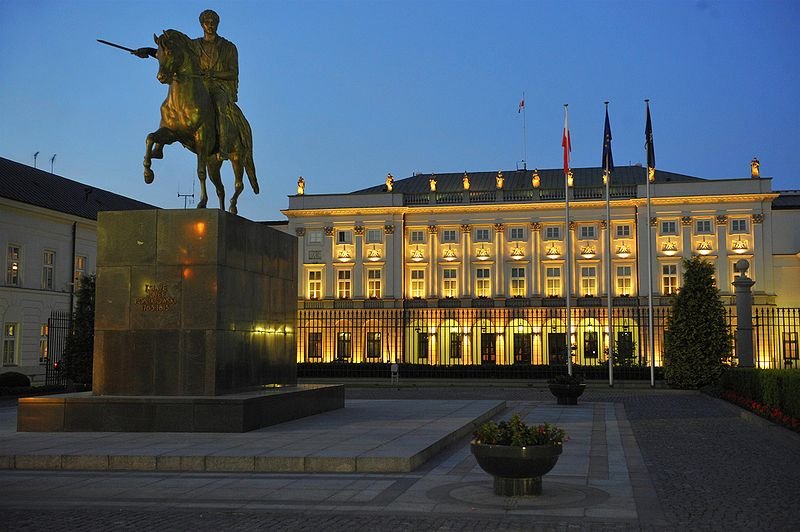 Presidential Palace of Warsaw
Presidential Palace of WarsawSource: https://commons.wikimedia.org/wiki/File:Palac_Prezydencki_w_Warszawie_5.JPG
Author: Cezary p

Its location in Central Europe means Warsaw is continuously overran by powerful neighbors. Between 1655 and 1658 alone it was attacked and ransacked by Sweden, Brandenburg and Transylvania. In 1795 Warsaw was annexed by Prussia, effectively ending its role as capital of the Polish-Lithuanian Commonwealth.
When Warsaw was finally liberated by Napoleon in 1806, it assumed a new role, as the capital of the Duchy of Warsaw, and from 1815, as the capital of the Tsardom of Poland, a constitutional monarchy in personal union with the Russian Empire.
Resentment over Russian rule was to test the union repeatedly, but Poland was to remain within the Russian empire until the end of the First World War, when it became an independent country. It successfully defended itself in the ensuing Polish-Bolshevik War of 1920.
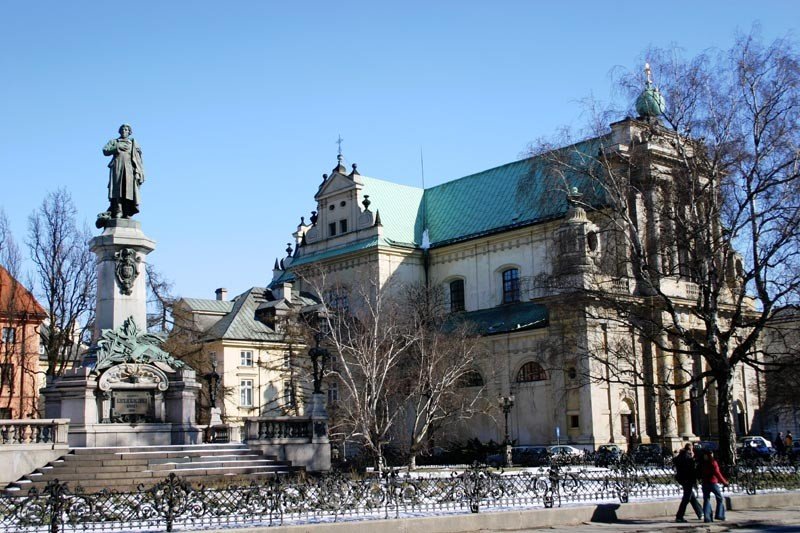 Statue of Adam Mickiewicz and the Carmelite Church
Statue of Adam Mickiewicz and the Carmelite ChurchSource: https://commons.wikimedia.org/wiki/File:4_Warszawa_44.jpg
Author: Marek & Ewa Wojciechowscy

Central Poland, including Warsaw, fell under Nazi rule during the Second World War. During this period, hundreds of thousands of Warsaw's Jewish people were eliminated. Those who survived were herded to live in the Warsaw Ghetto, where many died of diseases and starvation.
Towards the end of 1944, with the Red Army about to reach Warsaw, the Nazis expelled the entire civilian population of the city, when razed it to the ground. The Germans also siezed prized collections from Warsaw libraries and museums and brought them back to Germany and burned and blew up anything they did not want. The Red Army entered Warsaw on 17 January, 1945, finding the city in ruins.
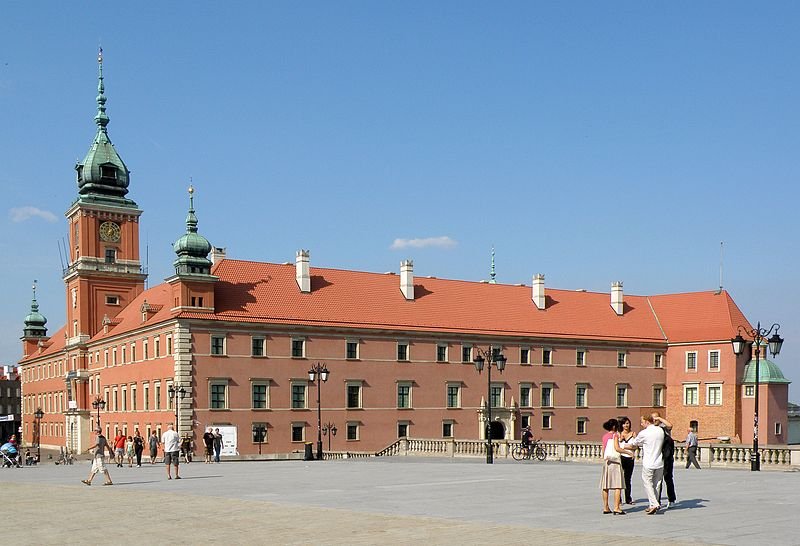 Warsaw Royal Castle
Warsaw Royal CastleSource: https://commons.wikimedia.org/wiki/File:POL_Warsaw_Royal_Castle_2008_%283%29.JPG
Author: Alina Zienowicz

Warsaw was under Communist rule following the end of the Second War War. Under Soviet rule, Warsaw began rebuilding itself, constructing prefabricated apartments to house its vast homeless population. The city managed to restore its Old Town, which was inscribed as a World Heritage Site in 1980.
Communist rule came to an end with the Revolutions of 1989, and Warsaw assumed the role of capital of the Third Polish Republic. It rapidly modernized. The Warsaw Metro opened in 1995, and the city is experiencing the biggest economic boom in its history.
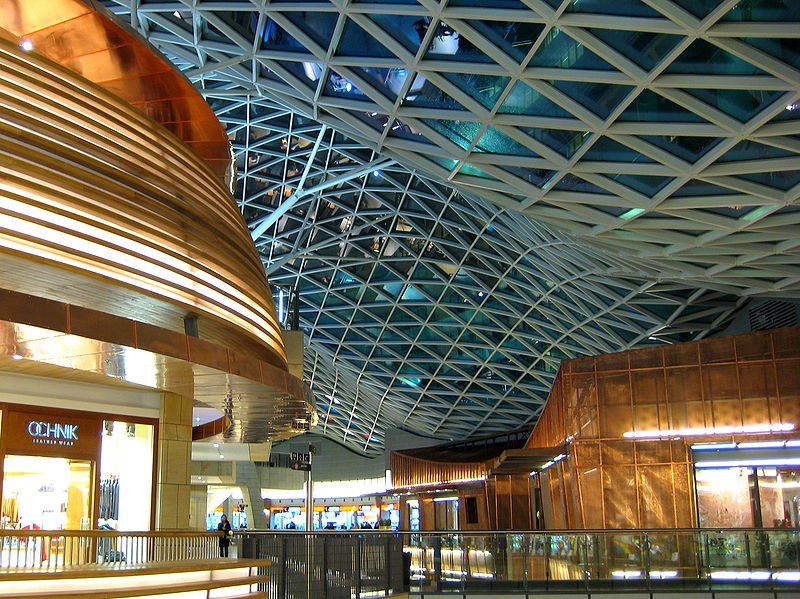 Zlote Tarasy Shopping Mall, Warsaw
Zlote Tarasy Shopping Mall, WarsawSource: https://commons.wikimedia.org/wiki/File:WarschauGoldeneTerassen.jpg
Author: Kescior

Visiting Warsaw
The Warsaw Frédéric Chopin (WAW) is the busiest airport in Poland. It has direct flight connections with major cities across Europe as well as with Cairo, Istanbul, New York City, Tel Aviv, Toronto, among others.From the airport, you can take bus 175 and 188 to downtown Warsaw. Bus 175 goes to the Warszawa Railway Station, the Old Town and the Centrum shopping center. It takes about 40 minutes. Bus 188 goes to Praga Południe on the east bank of the Vistula River.
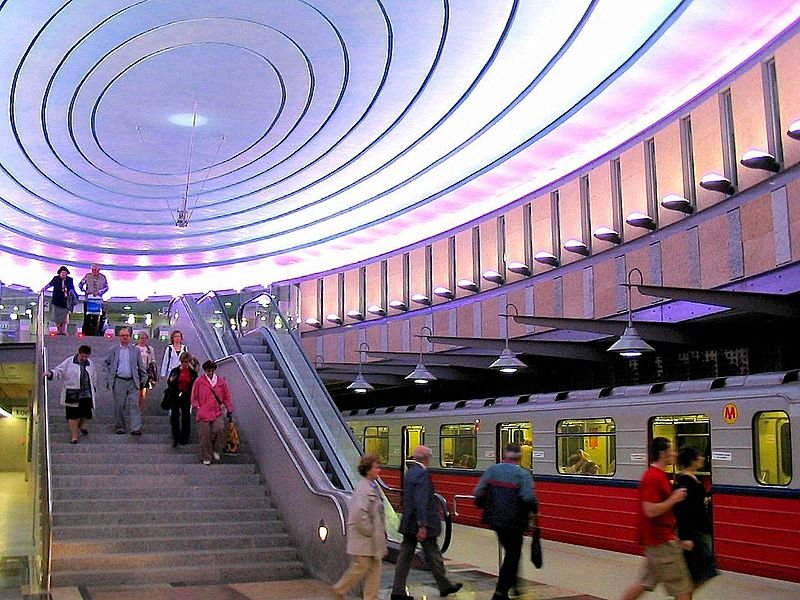 Plac Wilsona Metro Station, Warsaw
Plac Wilsona Metro Station, WarsawSource: https://commons.wikimedia.org/wiki/File:Warsaw_Metro_Plac_Wilsona_2.jpg
Author: tomo

Exploring Warsaw
The Warsaw Metro is one of the newest in Europe. However it only has one line at the moment, with the second line expected to be ready only in 2013. Another option is to take the trams, which is probably a better idea, as it allows you a bit of sightseeing on board.Tickets for public transport are managed by the Warsaw Transport Authority, and are valid for all means of transport. These can be purchased at the vending machines or at manned counters, as well as some shops. You can get the Travelcard, whyich allows unlimited travel for specific durations. They include 24 hours for 9 zł, 3 days for 16 zł and one week for 32 zł.
Places of Interest in Warsaw, Poland
City Center- Arsenal
- Branicki Palace
- Capuchin Church
- Ethnographical Museum
- Evangelical Church of the Augsburg Confession
- Krasiński Palace
- Monument to the Heroes of the Ghetto
- Monument to those Fallen and Murdered in the East
- Nożyk Synagogue
- Pac Palace
- Palace of Culture and Science
- Pawiak Prison
- Plac Bankowy
- Plac Teatralny
- Primate's Palace
- Przebendowski-Radziwiłłow Palace
- Saxon Gardens
- Umschlagplatz Monument
- Zachęta
- Cathedral of St John
- Church of the Holy Spirit
- Church of the Visitation of the Virgin Mary
- Church of St Jacek
- Church of St Kazimierz
- Church of St Martin
- Jesuit Church
- Monument to the 1944 Warsaw Uprising
- New Town Square
- Old Town Square
- Raczyński Palace
- Royal Castle
- The Barbican and City Walls of Warsaw
- Ulica Freta
- Zygmunt's Column
- Aleje Ujazdowskie
- Carmelite Church
- Church of the Holy Cross
- Church of St Anne
- Church of the Visitation
- Gniński-Ostrogski Palace
- Namiestnikowski Palace
- National Museum
- Nowy Świat
- Plac Trzech Krzyży
- Polish Military Museum
- Polish Parliament
- Staszic Palace
- Statue of Adam Mickiewicz
- University of Warsaw
- Belvedere Palace
- Center for Contemporary Art
- Church of St Anthony
- Church of Stanisław Kostka
- Królikarnia Palace
- Łazienki Palace
- Wilanów
Districts of Warsaw
Central Warsaw- Mokotów
- Ochota
- Praga Północ
- Praga Półudnie
- Śródmieście
- Wola
- Żoliborz
- Białołęka
- Bielany
- Rembertów
- Targówek
- Wawer
- Wesoła
- Ursynów
- Wilanów
- Bemowo
- Ursus
- Włochy
 Latest updates on Penang Travel Tips
Latest updates on Penang Travel Tips
Songs about Penang
About this website

Hello and thanks for reading this page. My name is Timothy and my hobby is in describing places so that I can share the information with the general public. My website has become the go to site for a lot of people including students, teachers, journalists, etc. whenever they seek information on places, particularly those in Malaysia and Singapore. I have been doing this since 5 January 2003, for over twenty years already. You can read about me at Discover Timothy. By now I have compiled information on thousands of places, mostly in Peninsular Malaysia and Singapore, and I continue to add more almost every day. My goal is to describe every street in every town in Malaysia and Singapore.
Copyright © 2003-2024 Timothy Tye. All Rights Reserved.


 Go Back
Go Back